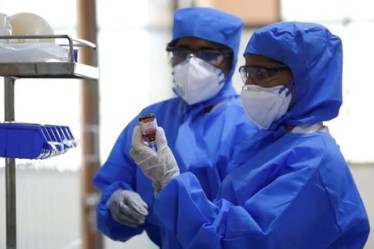Where does Coronavirus spread the most? At a time when India is likely to end its third phase of Coronavirus lockdown on May 17, there are some points that need to be taken into account while planning the exit strategy. Across the world, 14 studies have been conducted with a similar conclusion that public enclosed places like restaurants and workplaces can act as COVID-19 super-spreading environments, the Indian Express reported. The report said it has been noted that schools are not prominent transmission centres and children have been considered as an unlikely source of household infection. The studies were done after tracking index patients and the channels of contagion including religious gatherings, their homes, public transport and workplaces. The countries where the studies were conducted are the US, France, China, Singapore, South Korea, Japan, Taiwan, Iceland and Iran.
According to the report, these studies have put enclosed public gatherings and mass living spaces under high-risk environments and suggested that 5-1 per cent of the transmission can be traced to dining, entertainment and transportation. The report citing a study in The Lancet said that COVID-19 is largely transmitted by closed contact especially when the contact is prolonged or in a closed congregation. In Singapore, a church gathering resulted in more than 50 per cent of index patient’s positive secondary contacts.
It further said that the risk of transmission is likely to be reduced if anyone who is symptomatic does not attend events with prolonged social interactions. Proving the transmission in closed spaces, the report said that 147 out of 408 (36 per cent) residents in Boston’s homeless shelter reported Coronavirus positive. Similarly in China, 57 of 89 residents of a nursing facility turned out positive for the viral infection. The epidemic intensity of Coronavirus in China has been shaped by crowding, the report said adding that density played a major role in transmission than the influence of temperature or humidity.
Apart from this, the report said that it has been discovered that schools did not turn out to be prominent transmission centres for children who were below 10 years of age. Also, children were excluded from being the source of household infection for adults. Citing a study by Oxford, the report highlighted that when an English tourist came back from Singapore, he lived in a chalet in the French Alps for 4 days. As a result, 9 out of 11 other tourists in the apartment were tested positive along with three other living in the adjacent department. After the index patient left, one of the five more tourists who resided in the same apartment turned out positive for Coronavirus. When compared to a child who had a secondary positive contact, when he went to three different schools and met many people, he did not transmit COVID-19.
The report further stressed on an Australian study, in medRxiv, which also suggested that children, in case of Coronavirus are unlikely to be the source of any household infection.
Meanwhile in India, density is still a huge concern. AIIMS Director Dr Randeep Guleria, according to the report, has suggested that the impact will be huge on industries and other sectors. He further said, a micro-planning should be there for the country.
More than 52,000 cases have been confirmed in India for Coronavirus with around 15,000 people discharged/ cured and the death toll reached to 1,783.
